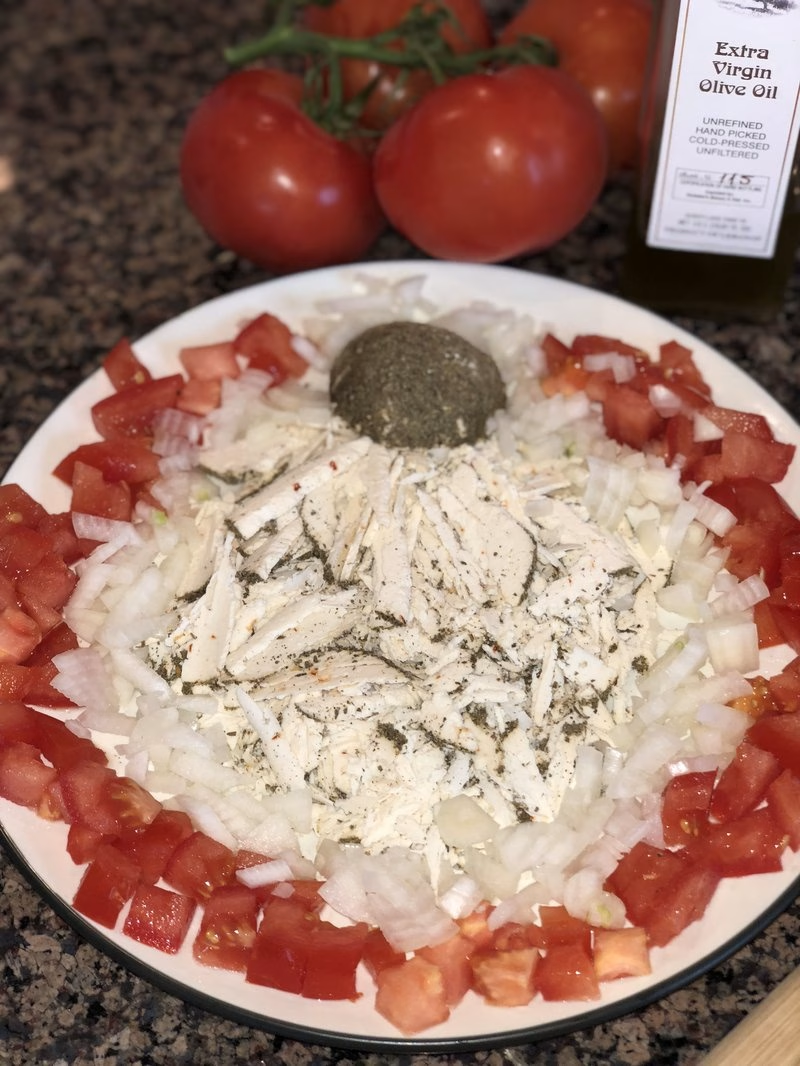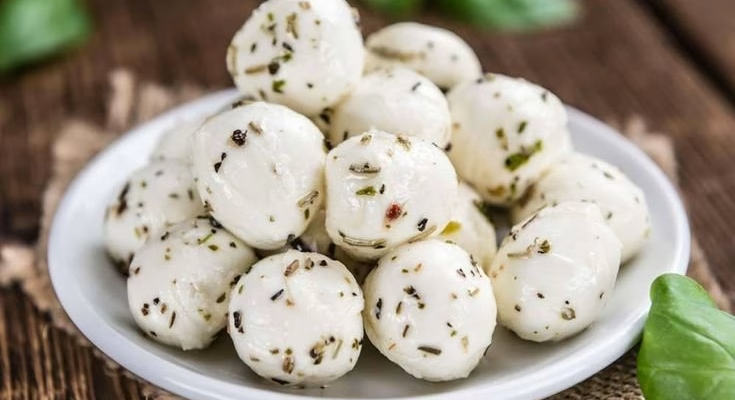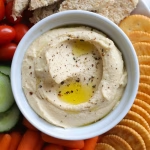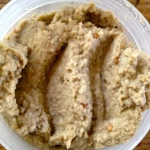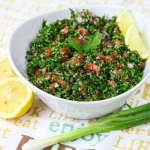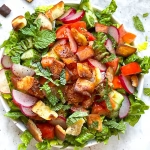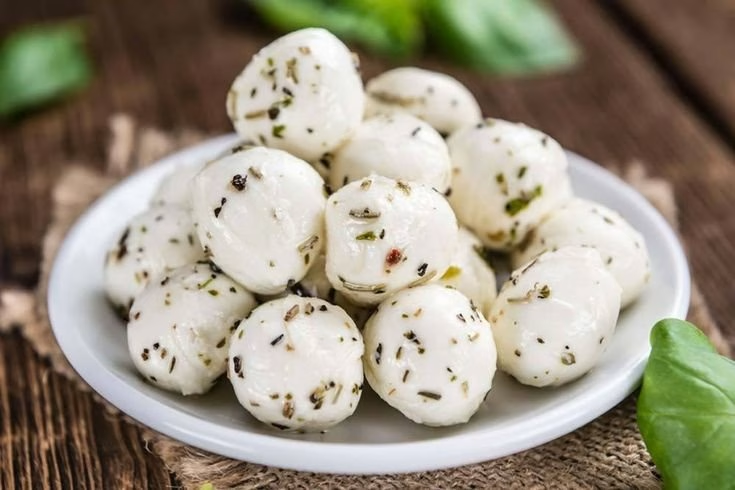
Imagine a cheese that’s as flavorful as it is unique—meet Shanklish (Fermented Cheese). This traditional Middle Eastern delicacy has a vibrant history, originating from Lebanon and Syria, where it has been cherished for centuries. It’s not just cheese; it’s a time-honored craft that involves fermentation, resulting in a tangy, distinctly rich taste that tantalizes the taste buds. The cultural significance of Shanklish goes beyond its delightful flavor; it symbolizes the art of preserving food in a region known for its rich culinary traditions.
In this article, you’ll discover everything about Shanklish (Fermented Cheese): from its essential ingredients and step-by-step preparation to variations you can try at home. Whether you’re looking to impress guests at a dinner party with a homemade cheese plate or simply want to indulge in a taste of the Middle East, this guide has got you covered!
Ingredients
| Ingredient | Measurement | Description |
|---|---|---|
| Whole Milk | 2 liters | Choose high-quality milk for the best flavor in your homemade Shanklish (Fermented Cheese). |
| Yogurt | 1 cup | Adds the needed cultures for fermentation, enhancing the cheese’s tanginess. |
| Salt | 2 teaspoons | Essential for flavor and preservation in Shanklish (Fermented Cheese). |
| Fresh Mint Leaves | 1/2 cup, chopped | Provides a refreshing taste that complements the cheese beautifully. |
| Chili Flakes | 1 teaspoon | A touch of heat that adds a delightful kick to your Shanklish (Fermented Cheese). |
| Olive Oil | For drizzling | Enhances flavor and adds richness when serving your best Shanklish (Fermented Cheese) recipe. |
Step-by-Step Instructions
- Step 1: Prepare the Milk – Start by bringing the whole milk to a boil in a large pot over medium heat. Stir occasionally and remove from heat once it bubbles up. Let it cool to about 40°C (104°F). This is crucial for achieving that perfect texture in your Shanklish (Fermented Cheese).
- Step 2: Add Yogurt – Stir in the yogurt once the milk has cooled. This will introduce the beneficial bacteria needed for fermentation. Cover the pot with a clean cloth and let it sit at room temperature for 24 hours. The mixture should thicken and develop a tangy flavor.
- Step 3: Strain the Cheese – After 24 hours, place a cheesecloth or a fine strainer over a bowl and pour the mixture into it. Gather the cloth edges and tie them up, letting the whey drain off. Leave to drain for about 5 hours; this step is key for achieving the right consistency.
- Step 4: Season the Cheese – Transfer the strained cheese into a mixing bowl. Add salt, chopped mint, and chili flakes, mixing well. Taste for seasoning, adjusting as necessary. This creates a flavor-packed base for your Shanklish (Fermented Cheese).
- Step 5: Form & Ferment – Shape the mixture into small balls or logs. Roll them in more chili flakes for an extra kick, if you like. Place on a tray lined with parchment paper and cover again. Allow them to ferment in a cool place for 2-3 days. The longer they sit, the stronger the flavor!
- Step 6: Serve – Once fermented, drizzle with olive oil before serving. Enjoy your Shanklish (Fermented Cheese) with pita bread, fresh vegetables, or salads. It’s a delightful addition to any cheese platter.
Pro Tips
- Use Fresh Ingredients: The quality of your ingredients directly impacts the flavor of your Shanklish (Fermented Cheese). Fresh milk and herbs will yield the best results.
- Temperature Matters: Make sure to monitor the temperature while making the cheese. Too hot, and the cultures die; too cold, and fermentation won’t happen.
- Experiment with Flavors: Don’t hesitate to play with the spices or herbs. Adding garlic or different types of peppers can give your Shanklish (Fermented Cheese) a unique twist.
- Storage: Store your Shanklish in an airtight container in the fridge. It can last for up to 2 weeks, but it does get stronger and tangier over time.
- Pair Wisely: Try pairing your Shanklish (Fermented Cheese) with olives, tomatoes, and even fresh figs for a delightful contrast.
Nutritional Information
| Nutrient | Per Serving (50g) |
|---|---|
| Calories | 180 |
| Protein | 10g |
| Carbohydrates | 3g |
| Saturated Fats | 6g |
| Fiber | 0g |
| Cholesterol | 20mg |
| Sugars | 2g |
| Fat | 15g |
FAQs
What is the best way to store Shanklish (Fermented Cheese)? Store in an airtight container in the refrigerator. It can last up to 2 weeks, but the flavor will intensify over time.
Can Shanklish (Fermented Cheese) be made vegan or gluten-free? Yes! You can use plant-based yogurt and alternative milk options to create a vegan version, and ensure the ingredients are gluten-free.
What are the best side dishes to serve with Shanklish (Fermented Cheese)? Pair it with fresh vegetables, olives, or pita bread. It also complements salads and grilled meats well.
How long does it take to prepare Shanklish (Fermented Cheese)? The preparation takes about 30 minutes, but remember the fermentation requires 2-3 days for optimal flavor.
Can I freeze Shanklish (Fermented Cheese) for later? While it’s possible to freeze it, the texture may change. It’s best enjoyed fresh.
Why is Shanklish (Fermented Cheese) so tangy? The tanginess comes from the fermentation process, as yogurt cultures break down the milk proteins and create lactic acid.
Can I use low-fat milk for Shanklish (Fermented Cheese)? You can, but using whole milk yields a creamier and richer cheese.
What is the history of Shanklish (Fermented Cheese)? Shanklish has its roots in the Levant region, where preserving cheese was essential for survival, turning it into a cherished culinary art.
